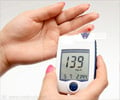Recent research has further confirmed the theory that environmental factors such as common infections may be a trigger for diabetes in children and young adults.
Recent research has further confirmed the theory that environmental factors such as common infections may be a trigger for diabetes in children and young adults.
The authors of the study, from Leeds and Newcastle Universities and Leeds Teaching Hospitals NHS Trust, carried out a sophisticated statistical analysis using information from the register on the times and places where the children and young adults were diagnosed.The study analysed information from a register of over 4,000 people aged 0-29 years old diagnosed with Type 1 diabetes in Yorkshire over a 25-year period. The findings for young adults have not been published before.
It has been estimated that about a quarter of a million people in the UK have Type 1 diabetes, with the number of cases diagnosed in children rising by three per cent each year. This develops if the body is unable to produce any insulin and usually appears before the age of 40.
The researchers found a pattern emerging where ‘clusters’ of cases were found at different geographical locations and time intervals for 10-19 year olds. There were six to seven per cent more cases of Type 1 diabetes found in 10-19 year olds in the clusters than would have been expected by chance.
It was also found that female sufferers of Type 1 diabetes were more likely to occur in clusters with seven to 14 per cent more cases than expected found in young girls and women aged 10-19 years.
This pattern of space-time clustering is common among conditions triggered by infections. Conditions caused by more constant environmental factors produce clusters of cases in one place over a much longer time period.
Advertisement
Earlier studies have suggested that infections are linked to the development of Type 1 diabetes in children who are genetically susceptible to certain environmental triggers.
Advertisement










